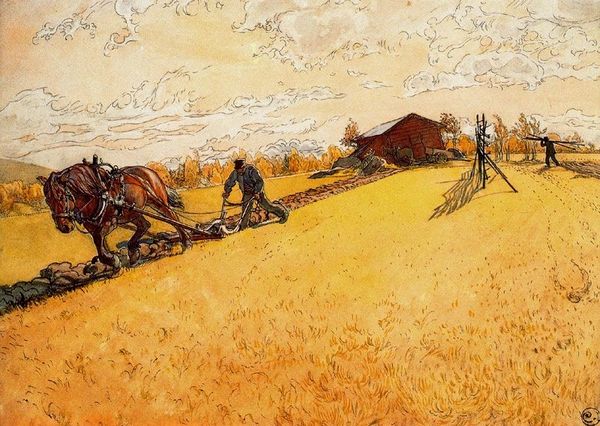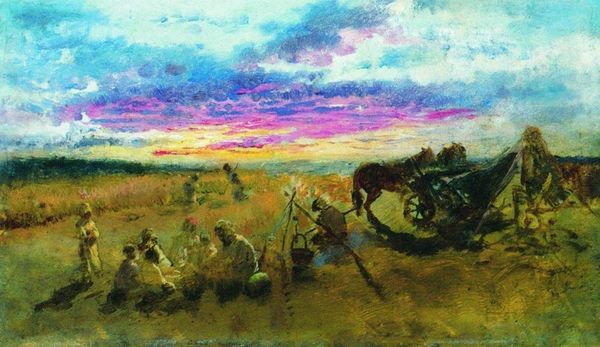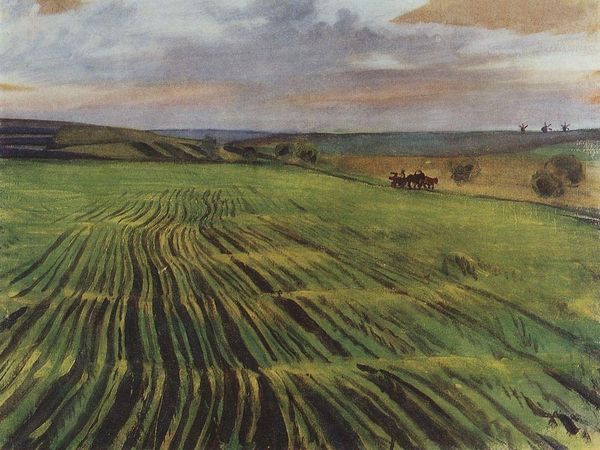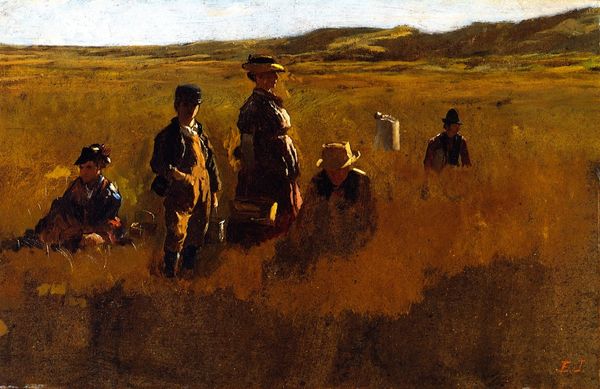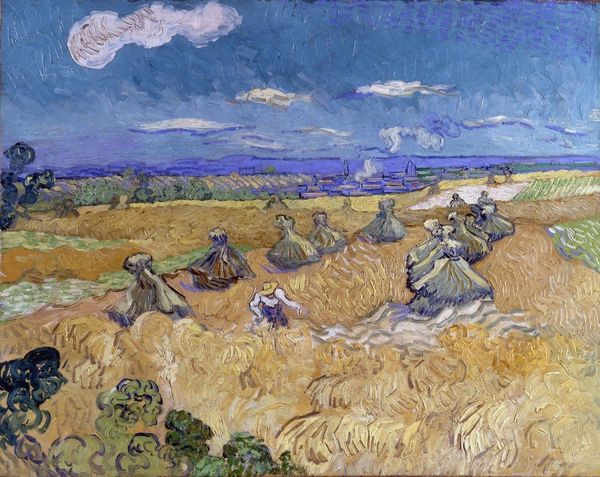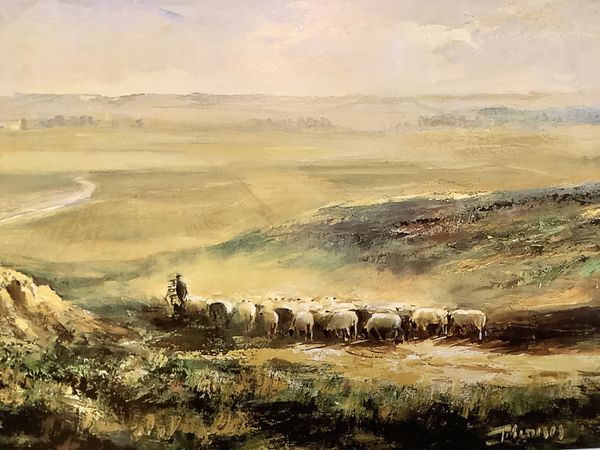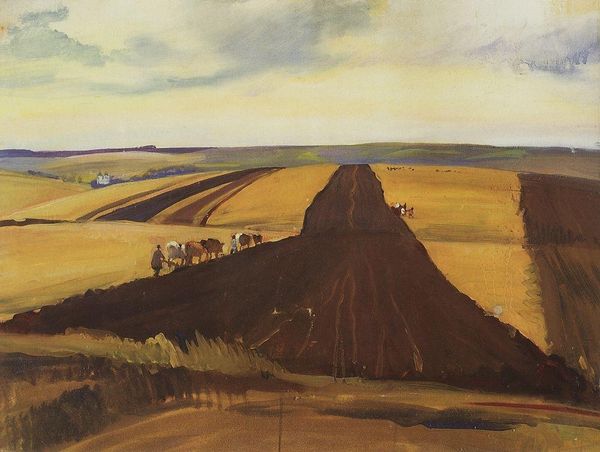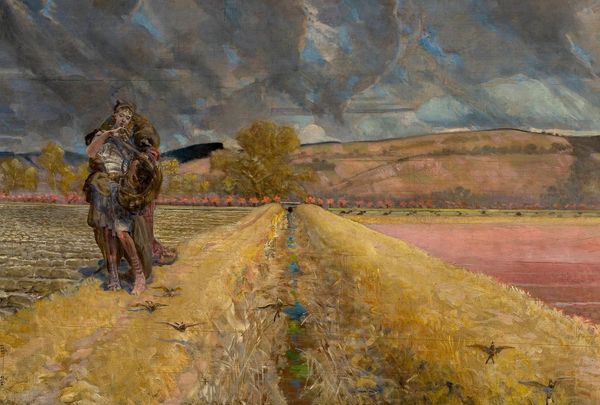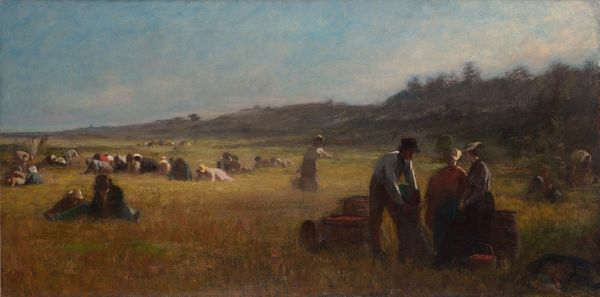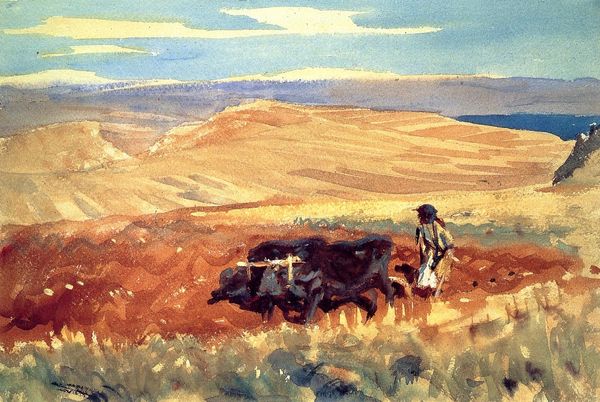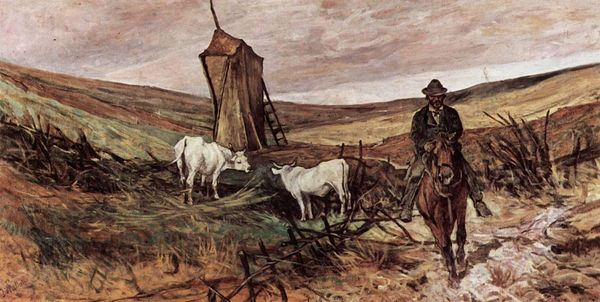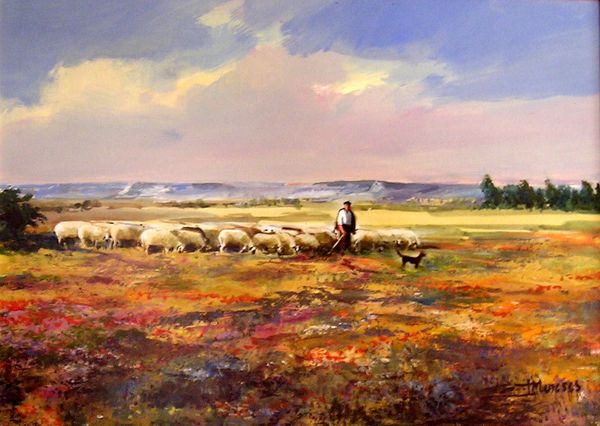
painting, oil-paint
#
painting
#
oil-paint
#
landscape
#
socialist-realism
#
oil painting
#
genre-painting
#
realism
Copyright: Karpo Trokhymenko,Fair Use
Curator: The relentless heat almost radiates from this piece, doesn’t it? An absolutely immersive field of gold. Editor: Yes, there’s something captivating about this work’s depiction of pastoral labor. This is "Mowing" by Karpo Trokhymenko, painted in 1935 using oil paints, if you’re curious about the specifics. It stands as an impressive example of socialist realism. Curator: Socialist Realism, right. You can almost smell the sweat and machine oil, can't you? Those tractors cutting a swathe…it’s imposing, but also, well, strangely hopeful. The neat rows stretching into the horizon suggest an almost utopian vision of mechanized farming. Editor: The artist certainly uses composition to create a heroic vision. The figures blend in with the machinery, becoming cogs in a greater, productive apparatus, so to speak. It is a potent political image, crafted and promoted by the state to idealize the collective farm, which of course held darker and far more complex realities. Curator: Complex is putting it mildly. Yet there is a pure optimism about this; Trokhymenko, in my mind, captures a sort of imagined future. Notice how the colours, although naturalistic, almost have an unreal vibrance about them, particularly in the contrast between the land and sky. Editor: Absolutely, the colours do evoke the powerful symbolism prevalent at the time: harvests equated to prosperity, labour represented solidarity, the collective progress that reflected on everyone. Art during this era held particular power. Art was intrinsically tied to projecting Soviet achievements and ideals. Curator: I like the term power because although the realities surrounding collectivisation were bleak for many, Trokhymenko still imbues an aura of shared purpose here. I am certain this landscape also resonated beyond political doctrine; maybe on an emotional level, by the visual symphony of progress or, put simply, how we want things to look and to be perceived by others. Editor: Indeed. While one can analyse the work for its social context, the artwork itself still holds up aesthetically through skillful portrayal of the Ukrainian landscape. We should consider that "Mowing" provides insight on that period’s art, acting as both historical document and a powerful image of collective strength. Curator: I keep getting caught on that heat haze and that sense of motion within the workers' collective labor... it makes it more than just propaganda for me. It becomes art. Editor: So while we witness what seems to be idyllic industry on canvas, "Mowing" offers an entryway into understanding more complicated realities within Ukrainian history through socialist-realist interpretation.
Comments
No comments
Be the first to comment and join the conversation on the ultimate creative platform.
